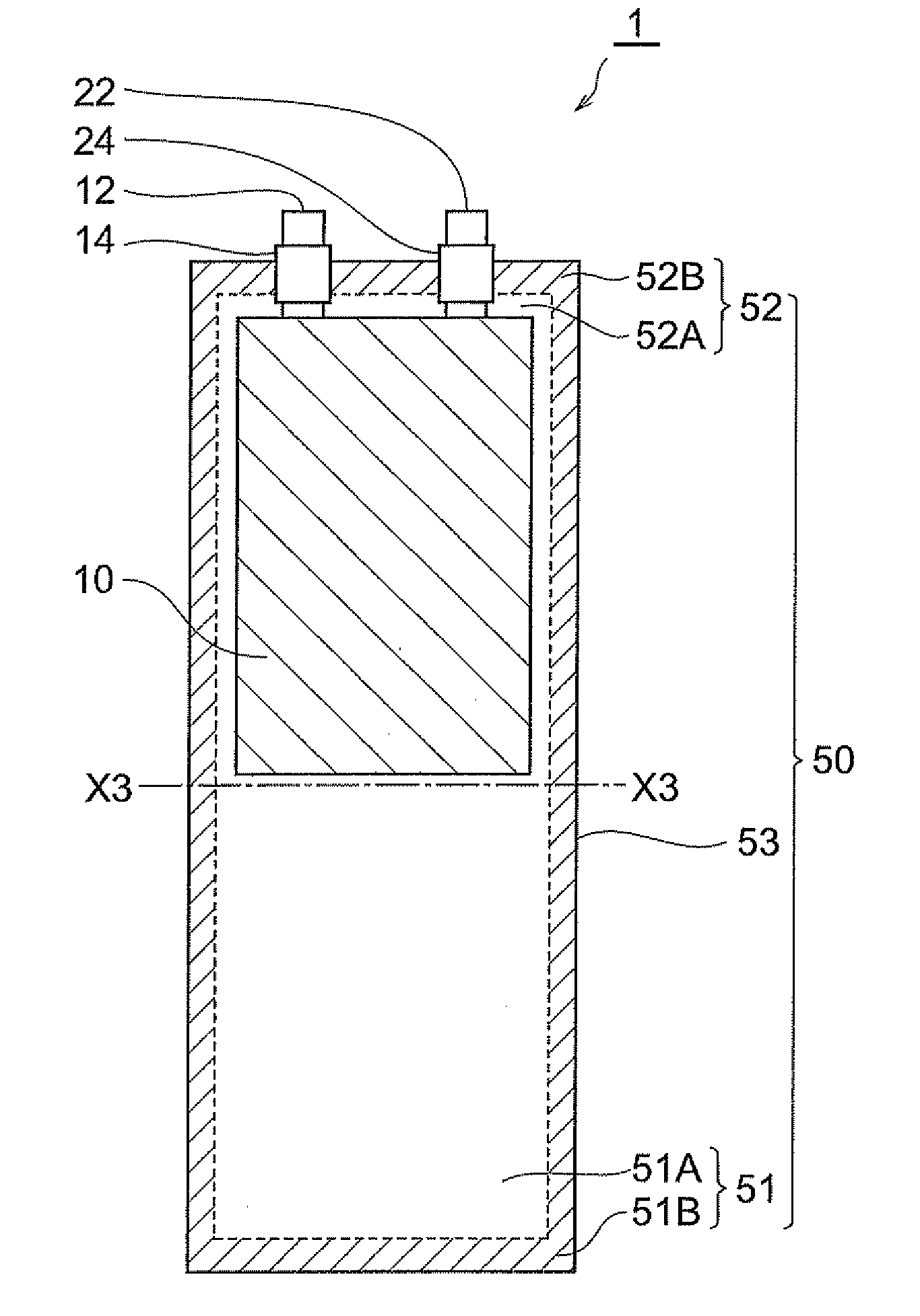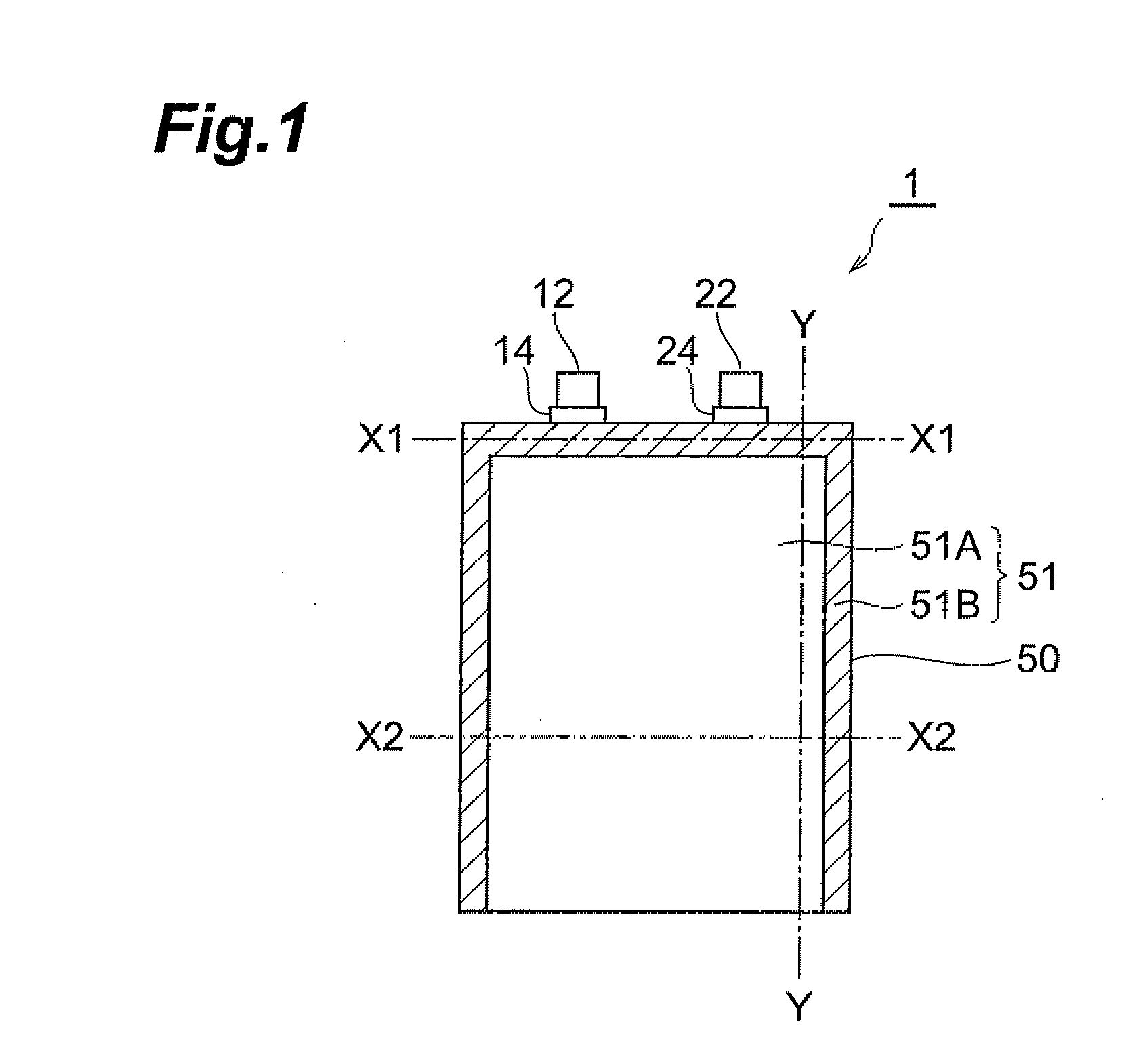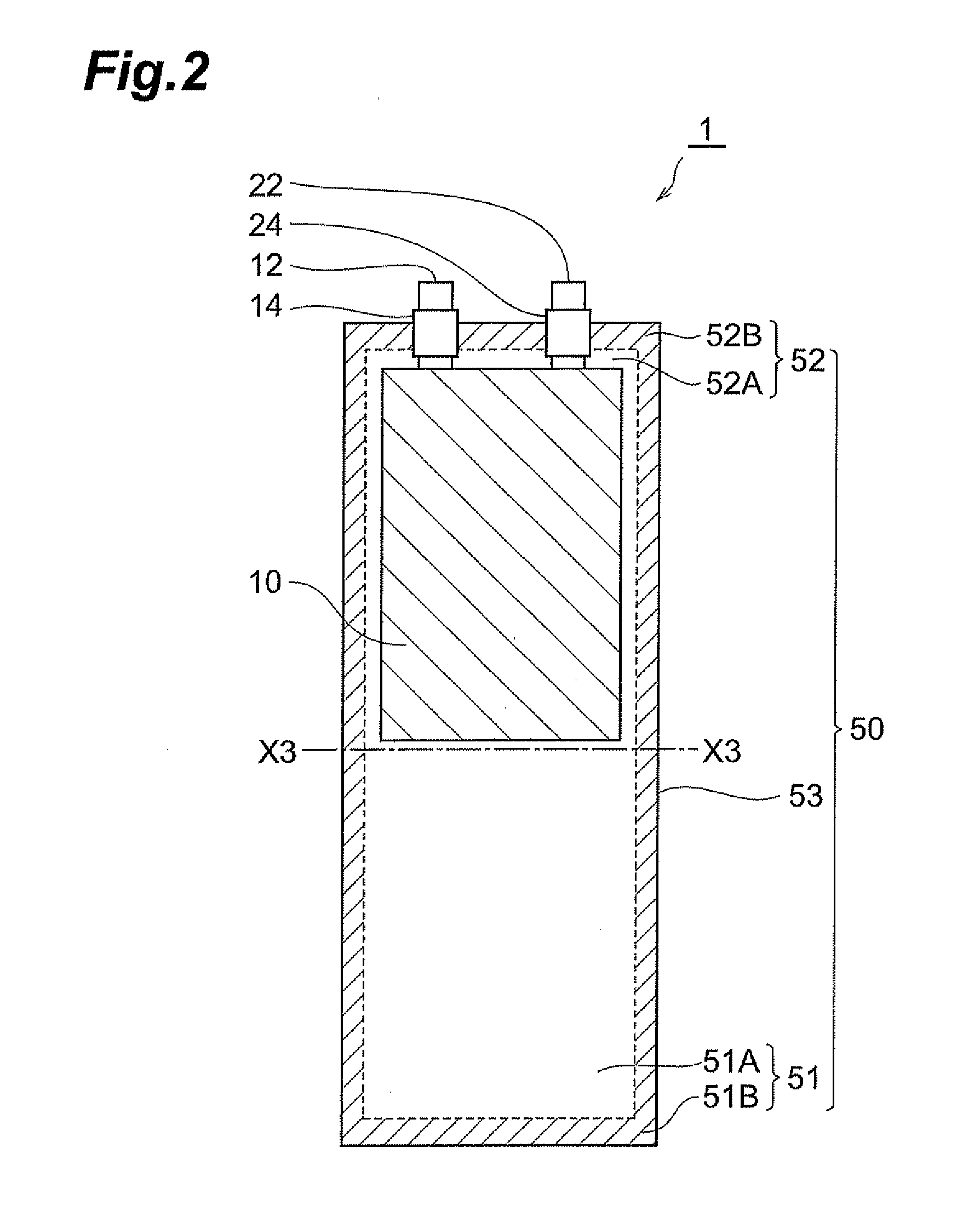Method of manufacturing lithium-ion secondary battery, electrolytic solution, and lithium-ion secondary battery
a lithium-ion secondary battery and electrolytic solution technology, applied in the manufacture of final products, non-aqueous electrolyte cells, cell components, etc., can solve the problems of lowering the rate characteristic, and achieve the initial charge/discharge efficiency and rate characteristic at a high level.
- Summary
- Abstract
- Description
- Claims
- Application Information
AI Technical Summary
Benefits of technology
Problems solved by technology
Method used
Image
Examples
example 1
[0127]Making of Anode
[0128]A mixture of 92 parts by mass of natural graphite (product name: OMAC manufactured by Osaka Gas Chemicals Co. Ltd.) and 8 parts by mass of polyvinylidene fluoride (PVDF) was dissolved into N-methylpyrrolidone (NWP), so as to yield a slurry-like coating liquid for forming an anode active material containing layer. This coating liquid was applied to a copper foil by doctor blading and then dried, so as to form an anode active material containing layer. This yielded an anode in which a current collector having a thickness of 15 μm and an active material containing layer having a thickness of 60 μm were laminated.
[0129]Making of Cathode
[0130]A mixture of 92 parts by mass of LiNi1 / 3MN1 / 3Co1 / 3O2, 3 parts by mass of acetylene black, and 5 parts by mass of polyvinylidene fluoride (PVdF) was dissolved into N-methylpyrrolidone (NMP), so as to yield a slurry-like coating liquid for forming a cathode active material containing layer. This coating liquid was applied to...
examples 2 to 8
[0135]Lithium-ion secondary batteries of Examples 2 to 8 were made as in Example 1 except that 1,2-epoxydodecane was added so as to attain concentrations of 0.3 mass % (Example 2), 0.5 mass % (Example 3), 1 mass % (Example 4), 2 mass % (Example 5), 3 mass % (Example 6), 5 mass % (Example 7), and 7 mass % (Example 8) at the time of preparing the electrolytic solution.
example 9
[0136]The lithium-ion secondary battery of Example 9 was made as in Example 1 except that 1,2-epoxypentadecane was added in place of 1,2-epoxydodecane so as to yield a concentration of 2 mass % at the time of preparing the electrolytic solution.
PUM
| Property | Measurement | Unit |
|---|---|---|
| mass % | aaaaa | aaaaa |
| crystallite size Lc002 | aaaaa | aaaaa |
| interlayer distance d002 | aaaaa | aaaaa |
Abstract
Description
Claims
Application Information
 Login to View More
Login to View More - R&D
- Intellectual Property
- Life Sciences
- Materials
- Tech Scout
- Unparalleled Data Quality
- Higher Quality Content
- 60% Fewer Hallucinations
Browse by: Latest US Patents, China's latest patents, Technical Efficacy Thesaurus, Application Domain, Technology Topic, Popular Technical Reports.
© 2025 PatSnap. All rights reserved.Legal|Privacy policy|Modern Slavery Act Transparency Statement|Sitemap|About US| Contact US: help@patsnap.com



